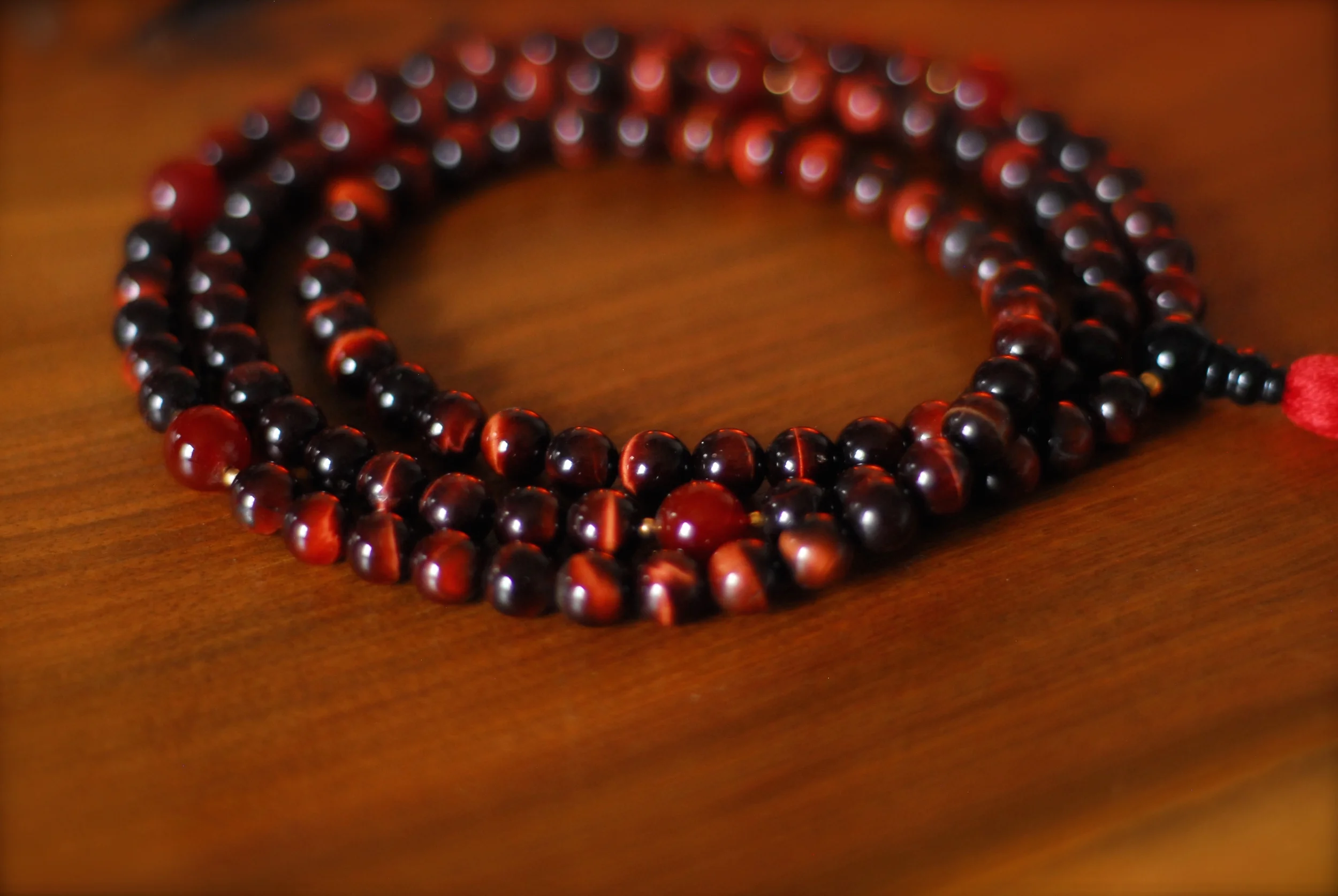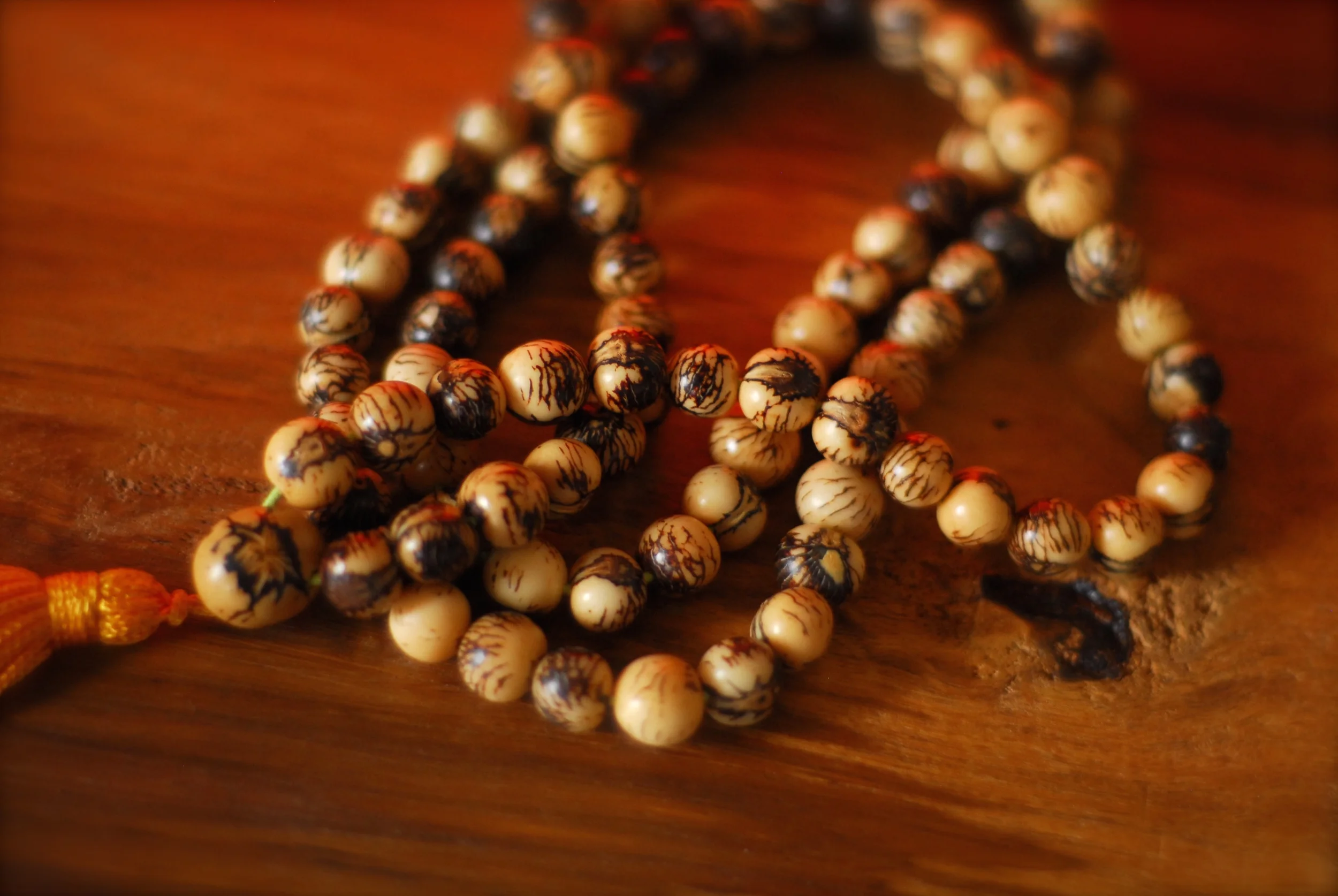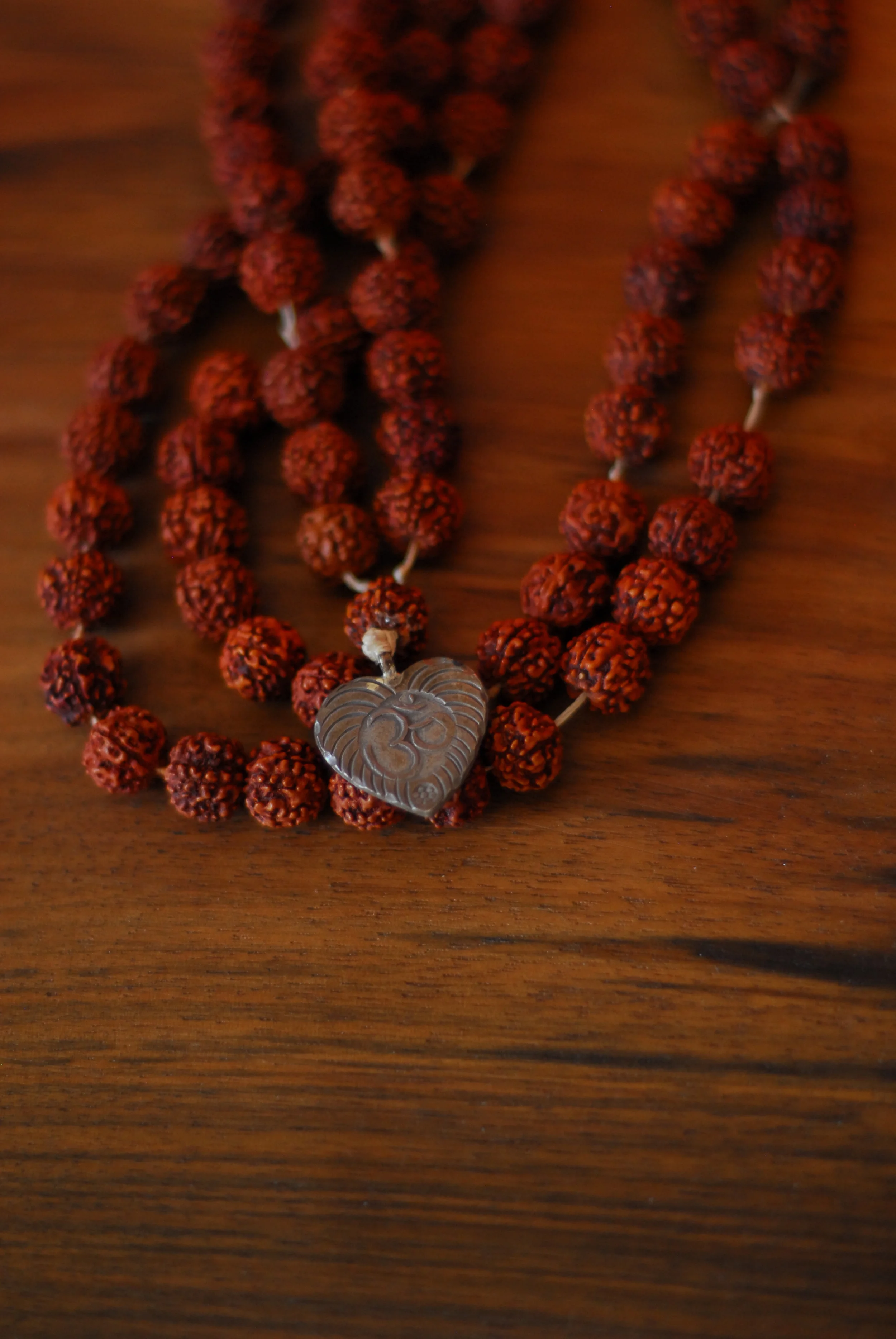Malas & Prayer Beads
Malas & Prayer Beads
What are Malas?
A mala is a string of beads, used to recite a Mantra, chant the names of God, or used for reciting other prayers. It’s the same thing as prayer beads, or a rosary. A full size Buddhist or Hindu mala typically has 108 beads
"Mala" is the original Sanskrit word for the prayer beads used for counting mantra recitations. Malas are ubiquitous in Tibetan Buddhist communities all over the world, wrapped around wrists or dangling from fingers, accompanying the humming recitations of mantras like om mani padme hum, om tare tuttare ture soha, or om muni muni maha muniye soha. In Tibetan we call them trengwa.
Since a common part of Tibetan Buddhist practice is repeating (mentally or out loud) certain mantras thousands or even hundreds of thousands of times, it is useful to use your rosary for counting off the number of prayers, like a spiritual abacus. Even if you are not actively counting, the repeated recitation of the mantra while proceeding bead by bead through the mala serves to focus and calm the mind.
The most common type of mala is a string of 108 beads, made of precious or semi-precious stones, wood, seeds, or bone. Each time you work your way around the mala, saying a mantra for each bead, you are considered to have completed 100 mantra recitations. The extra 8 beads are “spare” to make up for any miscounts or mistakes you may make along the way.
In addition to the standard prayer beads of the mala, there is an additional bead, called the “guru bead,” which hangs perpendicular to the circle of counting beads. The “guru bead” is usually larger than the others. Some believe that this bead has a special significance, as representing one’s guru, for example, but very practically, this bead is the starting point for the circuit, and is not counted among the 108 total.
When you get around to the guru bead, you don’t count it, and you don’t pass it; you stop there, mentally bow to the guru, flip the mala around, and start going back the other way. Each time you come to the guru bead you awaken once more, then you turn around and go back the way you came.
How to Hold and Count with your Malas (Buddhist Tradition)
We want to say, as is often true in Tibetan culture, that there are no strict rules when it comes to malas and the way to count your mantras. Everybody does it slightly differently. There are common ways of doing things but these do not matter nearly so much as your intention and your attitude of prayer. If you are praying from your heart while using your mala, you are doing the right thing!
Although some sources recommend using the mala in your left hand, some Tibetans also hold them in the right hand. If you have a prayer wheel in one hand and a mala in the other, it is more common to hold your mala in the left hand and the prayer wheel in the right.
To use your mala, start with the first bead next to the “guru” bead. Hold the bead between the index finger and thumb, and recite your mantra once out loud or silently. Then move on to the next bead with a rolling motion of your thumb, recite your mantra again and repeat. When you get to the guru bead again you have completed 100 mantras without needing to count each one.
At this point, most Tibetans do not pass over the guru bead but instead reverse direction by turning the mala around, and starting a new circuit of 100, going back the way they came. We are not sure, honestly, why this is so, and we do it out of habit rather than for any special reason. (Some people believe that if you continue in the same direction and cross over the guru bead, it is like stepping over your teacher.)
Monks and nuns will generally use very simple and inexpensive malas, like wooden ones. You can use any mala you like. It is better to focus on the spiritual practice of praying and reciting mantras rather than on the looks or value of your mala.
Caring for your Mala
In general, your mala will grow in spiritual significance as you use it for mantra recitations and bring it to teachings and possible have it blessed by your guru. And while it is not in itself as sacred as a statue or a piece of Buddhist scripture, it is something we usually treat with respect. This means that you wouldn’t put it on the floor or put mundane objects on top of it or throw it.
When not using their malas, Tibetans wrap them around their wrists or hang them around their necks. (Although no one uses it for counting while around the neck.)
When you don’t need it for a while, or are sleeping, for example, you can hang it on a clean, highish place, maybe near your altar. We actually keep ours in a special bookshelf under our altar. It’s all up to you and your intention to treat it with care and respect while maintaining a practical, non-extreme attitude. That’s how Tibetans tend to do it anyway. Enjoy.





